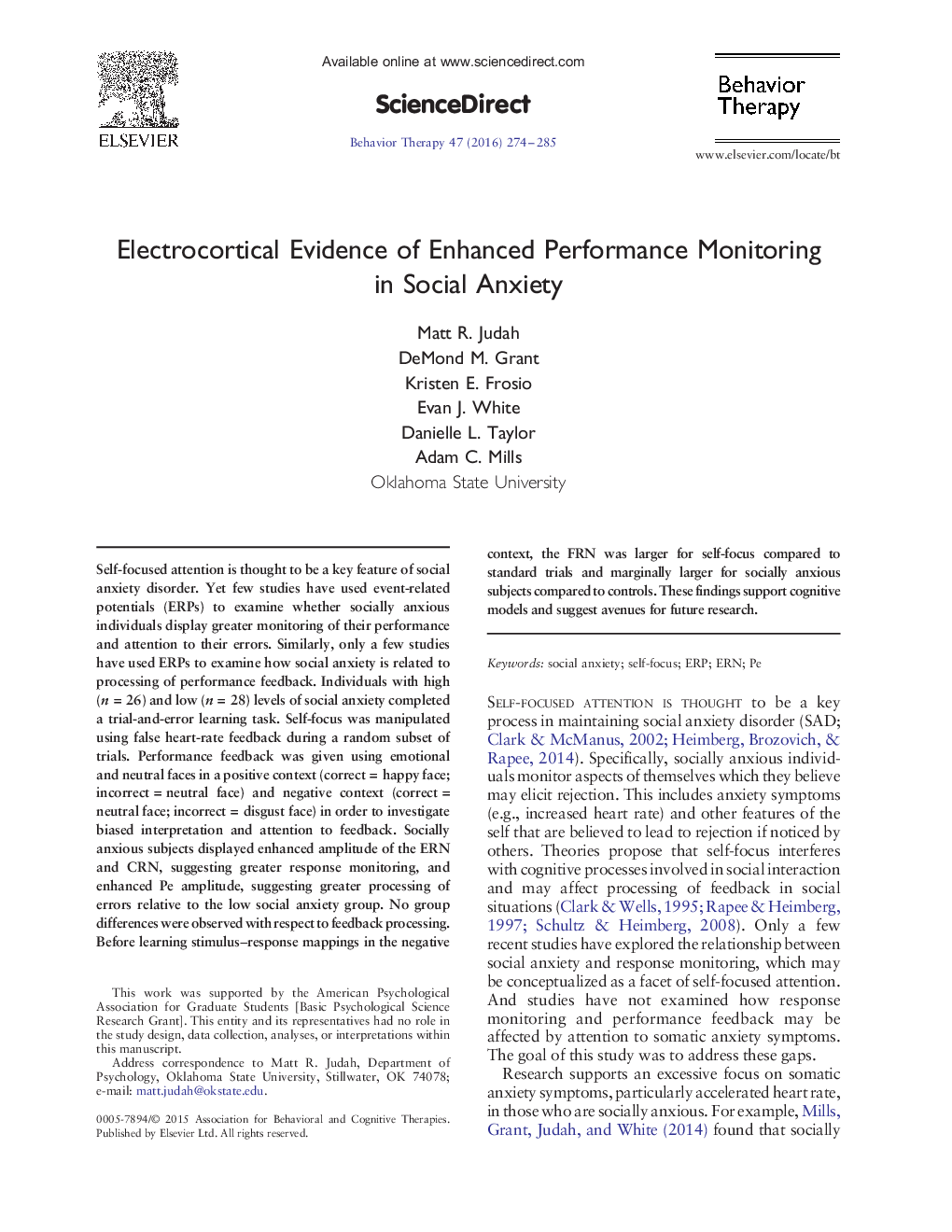| Article ID | Journal | Published Year | Pages | File Type |
|---|---|---|---|---|
| 901192 | Behavior Therapy | 2016 | 12 Pages |
•Socially anxious and control subjects completed a trial-and-error learning task.•ERN/CRN and Pe amplitudes were higher in socially anxious than control subjects.•These data suggest greater action monitoring and error awareness in social anxiety.
Self-focused attention is thought to be a key feature of social anxiety disorder. Yet few studies have used event-related potentials (ERPs) to examine whether socially anxious individuals display greater monitoring of their performance and attention to their errors. Similarly, only a few studies have used ERPs to examine how social anxiety is related to processing of performance feedback. Individuals with high (n = 26) and low (n = 28) levels of social anxiety completed a trial-and-error learning task. Self-focus was manipulated using false heart-rate feedback during a random subset of trials. Performance feedback was given using emotional and neutral faces in a positive context (correct = happy face; incorrect = neutral face) and negative context (correct = neutral face; incorrect = disgust face) in order to investigate biased interpretation and attention to feedback. Socially anxious subjects displayed enhanced amplitude of the ERN and CRN, suggesting greater response monitoring, and enhanced Pe amplitude, suggesting greater processing of errors relative to the low social anxiety group. No group differences were observed with respect to feedback processing. Before learning stimulus–response mappings in the negative context, the FRN was larger for self-focus compared to standard trials and marginally larger for socially anxious subjects compared to controls. These findings support cognitive models and suggest avenues for future research.
